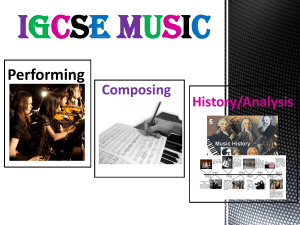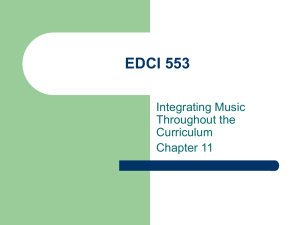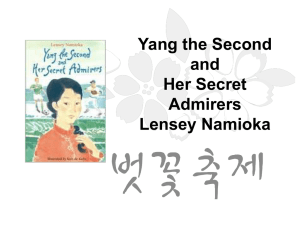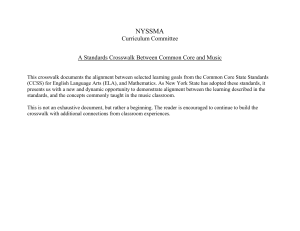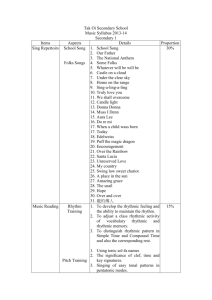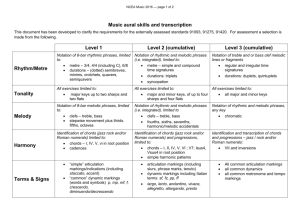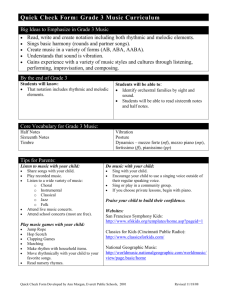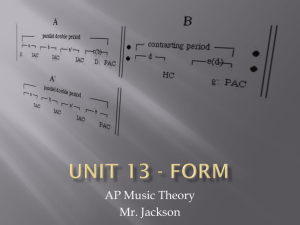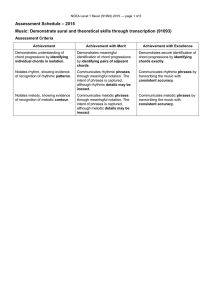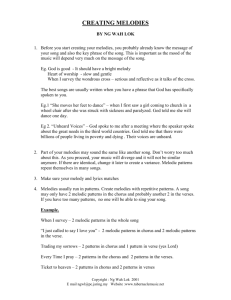Composition Folio - postmodern 2
advertisement
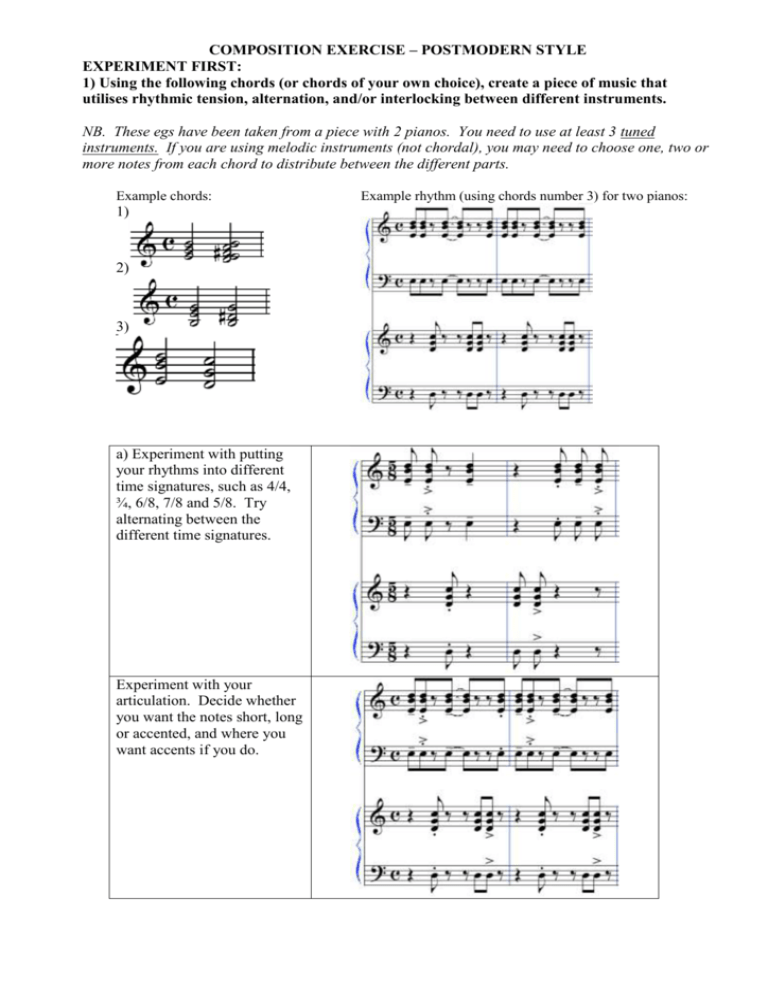
COMPOSITION EXERCISE – POSTMODERN STYLE EXPERIMENT FIRST: 1) Using the following chords (or chords of your own choice), create a piece of music that utilises rhythmic tension, alternation, and/or interlocking between different instruments. NB. These egs have been taken from a piece with 2 pianos. You need to use at least 3 tuned instruments. If you are using melodic instruments (not chordal), you may need to choose one, two or more notes from each chord to distribute between the different parts. Example chords: 1) 2) 3) a) Experiment with putting your rhythms into different time signatures, such as 4/4, ¾, 6/8, 7/8 and 5/8. Try alternating between the different time signatures. Experiment with your articulation. Decide whether you want the notes short, long or accented, and where you want accents if you do. Example rhythm (using chords number 3) for two pianos: 2) Now choose a melodic instrument, and add a melody to the rhythmic section you have written. a) Try using faster, repeated notes and build up the melody in a pattern that you choose. For example… c) Now try using longer notes that contrast with the rhythmic nature of the other parts. For example… b) If you feel your melody is too cramped by a ‘busy’ accompaniment, experiment with rests in the accompanying parts to create space for your melody. For example… NOW STRUCTURE YOUR PIECE! 3) Choose how you are going to structure your piece. a) You may wish to create an “A” section by combining the two different melodies you wrote with the accompaniment pattern. For example: b) You may wish to create a “B” section by using the section with the alternating time signatures. c) Finish your piece off with a repeat of the “A” section. 4) Writing about your piece Discuss the techniques that you have used, and the effect that you were intending to create with these techniques. Be careful not to simply describe the music. Instead, state the intended mood/effect that the music was designed to create, the techniques used to do this, and whether you thought you achieved this mood. For example: In the A section, I intended to create tension and an exciting mood through dynamics, rhythmic interlocking between the two pianos and articulation. The first two bars of A are fortissimo for the melody instrument and mezzo-forte for the pianos. This, combined with the syncopated rhythm in the pianos and the interlocking of the rhythmic patterns, is designed to establish an energetic and exciting mood. The sudden drop of dynamic creates a sense of surprise, and releases the tension of the previous two bars. This tension is then increased by rising dynamic levels and rising pitch in the melodic part, supported by the syncopated piano parts. These four bars are then repeated. Although I think these techniques did create tension, perhaps it could have been improved further by changing the piano accompaniment in the 3rd and 4th bar of A (and subsequently the repeate of A) so that it more accurately reflected the melodic instrument, both rhythmically and melodically, creating more of a build-up, and hence more excitement, towards the end of bar 4. IN SHORT: Composition: Decide on a structure Decide on a style Ensure it is technically correct (right rhythmic values, correct ranges for instruments) Writing: Use correct terminology Describe what effect you were intending to create Describe how you intended to create it (what musical techniques were used) Say whether you thought it was successful or not.


